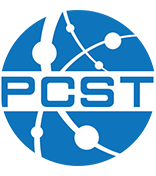Getting all emotional about communicating science
Author: Graham Walker – CPAS, Australian National University, Australia
Emotions are a key aspect of effective science communication (Davies & Horst, 2016), but which emotions are critical and what is the underlying mechanism of eliciting them? This performance answers this question using the medium of ‘science shows’ – presentations combining live science demonstrations with dramatic delivery – as used in science centres globally. Although a common science communication method, science shows receive little theoretical analysis. The performance will showcase the role of emotions and motivational states including surprise, interest, enjoyment, awe, curiosity and intrinsic motivation, based on the presenters PhD research. These psychological states will be illustrated via intriguing, entertaining and interactive demonstrations in a performance that fuses science show presenting with insights from emotion psychology relevant to science communication.
Recently, psychologists have broken down emotions into their component parts or ‘triggers’, termed appraisal theories of emotion. By dissecting emotions into the mental appraisals that lead to them, science communicators can fine-tune how they elicit them. The performance will discuss these appraisals and show how they can be manipulated, especially through the use of performance techniques, props and demonstrations – however links to other forms of science communication will also be made. Understanding relationships between emotions is also key for making them effective tools for science communicators. For example, how surprise leads to curiosity, or the tandem role of interest and enjoyment during play experiences or instances of psychological ‘flow’. These relationships will be brought to life vividly in the performance.
Science communicators and psychologists tackle common problems, however sharing between the disciplines is often limited. This performance addresses this shortcoming, while presenting ideas from contemporary emotion and motivation psychology that science communicators can use in their research and practice. However, in keeping with the format of the session, these fundamental ideas in communication will be very much performed.
The author has not yet submitted a copy of the full paper.
Presentation type: Perfomance
Theme: Science
Area of interest: Investigating science communication practices
